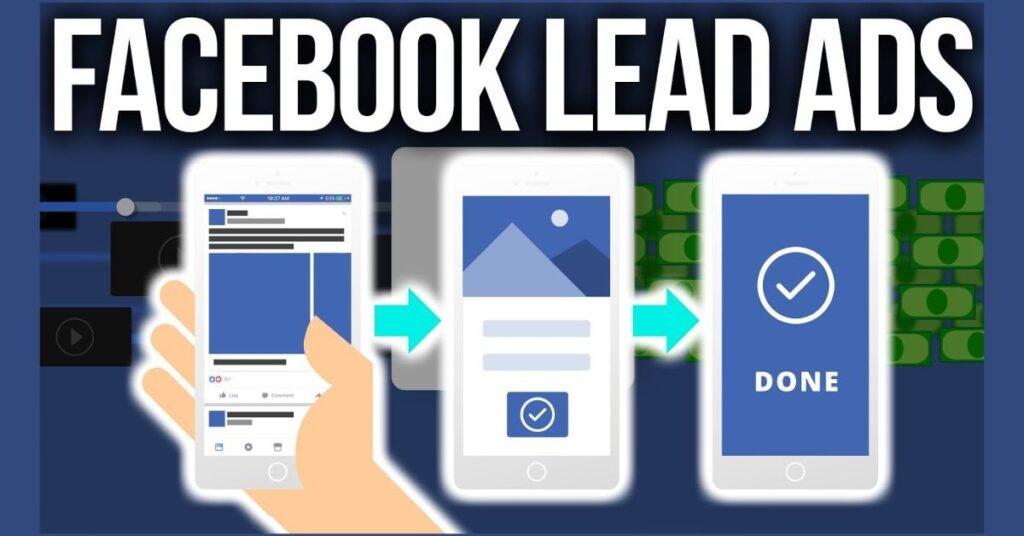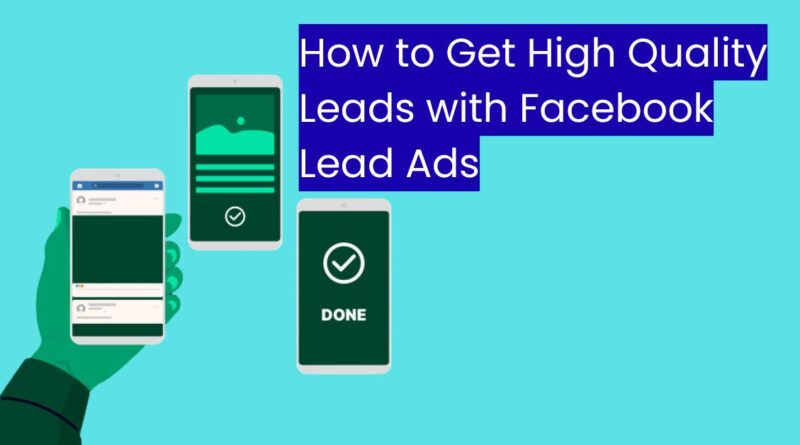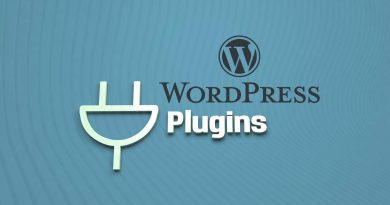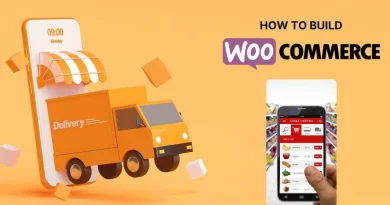How to Get High Quality Leads with Facebook Lead Ads
Facebook Lead Ads have become one of the most effective ways to capture potential customers directly within the platform. They are designed to help businesses connect with their audience quickly by making it simple for users to submit their information without leaving Facebook. However, getting the best out of Facebook Lead Ads is not just about running campaigns. The true success comes when you know how to optimize your ads for both lead quality and volume. Many businesses face a common challenge. Either they get too many leads but most of them are low quality, or they focus too much on quality and end up with fewer leads. Finding the right balance requires a mix of strategy, creativity, and consistent testing. This article will explore practical ways to optimize Facebook Lead Ads to achieve both quality and quantity, giving you the maximum return on investment.
Understanding Facebook Lead Ads
- Facebook Lead Ads are a type of paid advertisement where users can fill in their information without being redirected to an external website. Instead of moving to a landing page, the form opens directly within Facebook. This simplicity is what makes them so powerful.
- The forms can be customized to include fields like name, email, phone number, job title, or even custom questions. The key advantage is reduced friction for the user, which means more people are likely to submit their details.
- But the ease of submitting information can also lead to unqualified or irrelevant leads. People may fill the form quickly without much thought. That is why optimization becomes important.
Why Optimization Matters
Optimization ensures that you get leads that are both relevant and useful for your business. For example, if you run a real estate agency, a high number of leads is useless if they are not genuinely interested in buying or renting. On the other hand, focusing too much on narrowing your form could reduce the number of people filling it. The goal is to create a system that balances both. By improving targeting, form design, ad content, and follow up strategies, you can increase the volume of leads without sacrificing quality.
Step 1: Target the Right Audience
Your ads are only as strong as the audience you reach. Targeting the right people is the foundation of quality leads.
Use Custom Audiences
You can upload your existing customer lists, website visitors, or people who have engaged with your Facebook page. This way, you are reaching people who already know your brand.
Lookalike Audiences
Facebook allows you to create lookalike audiences based on your existing customers. This feature helps you find new people with similar behaviors and interests.
Refined Interest Targeting
Instead of targeting broad groups, focus on specific interests. For example, a fitness brand can target people who follow healthy lifestyle pages rather than just targeting “health and fitness” as a broad interest.
Geographic and Demographic Filters
If your service is limited to a certain area, make sure you select that region. Similarly, use filters such as age, gender, and occupation if they match your buyer profile.
Step 2: Craft Compelling Ad Copy and Creatives
The words and visuals you use play a huge role in attracting the right audience.
Clear and Honest Messaging
Avoid exaggerated promises. Be clear about what users will get by submitting their information. For example, instead of saying “Get rich fast,” say “Learn proven strategies to grow your savings.”
Eye Catching Images or Videos
Visuals should connect with your target audience emotionally. A coaching program can show happy students or success stories. A real estate ad can feature beautiful homes.
Strong Call to Action
Use direct calls such as “Sign up now,” “Get your free consultation,” or “Download the guide today.” Make sure users know exactly what they are expected to do.
Step 3: Optimize the Lead Form
The lead form is the heart of Facebook Lead Ads. Optimizing it can dramatically improve both quality and volume.
Keep It Simple
Too many questions can discourage people from filling the form. Focus on essential fields like name, email, and phone number.
Use Custom Questions for Quality
If you want to filter out casual signups, add one or two custom questions. For example, a real estate company can ask, “Are you looking to buy within the next six months?” This small step ensures that only serious leads submit their information.
Multiple Choice Options
When asking questions, give multiple choice answers. This makes it faster for users and helps you collect more accurate data.
Thank You Screen
Customize the thank you screen to give clear next steps. For example, include a link to schedule a call or visit your website. This keeps the lead engaged right away.
Step 4: Offer Real Value
Users are more likely to submit their information if they see value in exchange.
Lead Magnets
Provide something valuable such as a free eBook, checklist, template, or discount. For example, a nutrition brand can offer a “7 Day Meal Plan” in return for an email.
Free Consultations or Demos
Service based businesses can offer a free consultation or trial. This works well in industries like education, fitness, and health care.
Exclusive Access
Offer early access to a new product or a special event. People like to feel they are part of something exclusive.
Step 5: Follow Up Quickly
Even the best leads can go cold if you delay follow up.
Immediate Response
Set up automated responses or integrate with a customer relationship management tool. Send a thank you message or deliver the promised content instantly.
Personal Touch
While automation is useful, add personal communication as soon as possible. A call or personalized email increases trust and connection.
Nurturing Campaigns
Not all leads are ready to buy right away. Use email sequences, social media retargeting, or even SMS to stay connected until they are ready.
Step 6: Test and Analyze
Optimization is not a one time task. Continuous testing is key.
A/B Testing
Experiment with different ad creatives, form designs, and calls to action. For example, test an image versus a video to see which performs better.
Track Key Metrics
Monitor cost per lead, lead quality, and conversion rate. If you see high numbers of leads but low sales, adjust your targeting or form questions.
Audience Insights
Facebook provides valuable data on how your audience interacts with your ads. Use these insights to refine future campaigns.

Step 7: Improve Lead Quality with Intent Questions
Intent questions can help reduce unqualified leads. For example:
-
What is your budget range
-
When are you planning to buy
-
Are you looking for personal or business use
These questions filter out people who are just curious and highlight serious prospects.
Step 8: Use Higher Intent Forms
Facebook offers an option called “Higher Intent” where users must confirm their details before submitting. This small step reduces accidental signups and ensures more accurate information.
Step 9: Retargeting for Warmer Leads
Sometimes people click but do not complete the form. Retargeting helps you reach them again with a reminder. You can also retarget people who have already filled a form but did not convert, by showing them different offers or content.
Step 10: Balance Quality and Volume
Balancing both requires regular adjustments. If you are getting too many irrelevant leads, add filtering questions. If you are getting very few leads, simplify the form or broaden targeting. Think of it like a funnel. At the top, keep the entry wide enough to attract good numbers, but use the middle and bottom stages to filter for quality.
Common Mistakes to Avoid
-
Asking for too much information upfront – Long forms scare away potential leads.
-
Using vague offers – If users do not see clear value, they will ignore your ad.
-
Poor targeting – Showing ads to the wrong people will waste money and time.
-
Delaying follow up – Waiting too long can make leads forget about you.
-
Not testing enough – Running one version of an ad without testing others reduces potential performance.
Final Thoughts
Facebook Lead Ads are a powerful tool for businesses of all sizes. By focusing on the right audience, creating engaging content, optimizing forms, and ensuring quick follow up, you can maximize both lead quality and lead volume. The key is to balance simplicity with precision. Too simple and you may get unqualified leads. Too strict and you may reduce your lead count. The right mix comes with experimentation and data analysis. When done correctly, Facebook Lead Ads not only increase your number of leads but also ensure that those leads are valuable to your business. This results in higher conversions, better customer relationships, and stronger growth.
Frequently Asked Questions
What are Facebook Lead Ads?
Facebook Lead Ads are a type of advertisement that allows users to submit their information directly within Facebook without being redirected to an external website.
How can I improve the quality of my leads on Facebook?
You can improve quality by targeting the right audience, adding custom questions to your lead forms, using higher intent options, and following up quickly.
What kind of lead magnets work best for Facebook Lead Ads?
Effective lead magnets include free eBooks, guides, checklists, trial offers, consultations, and exclusive discounts.
How do I balance lead quality and lead volume?
Balance comes from keeping forms simple enough for higher volume while adding selective questions to filter out irrelevant leads.
How fast should I follow up with leads from Facebook?
It is best to follow up immediately. Automated thank you messages or quick phone calls ensure leads remain interested.
Are Facebook Lead Ads better than landing pages?
Facebook Lead Ads reduce friction by keeping users on the platform, but landing pages may allow for more customization. The choice depends on your goals.
What metrics should I track for Facebook Lead Ads?
Important metrics include cost per lead, conversion rate, lead quality, and overall return on investment.
Can small businesses benefit from Facebook Lead Ads?
Yes. Small businesses can use Facebook Lead Ads effectively because they are cost friendly, easy to set up, and reach targeted local audiences.




